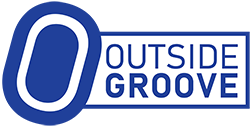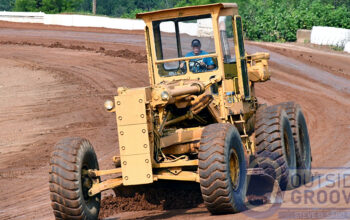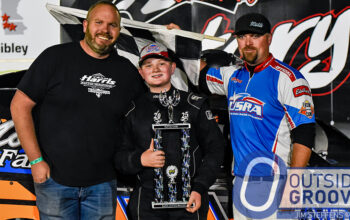Racers during the Ice Breaker at Lincoln Speedway saw a conventional flagman and a new virtual flagman. The dirt track located in Abbottstown, Pennsylvania, seeks to replace one of the most dangerous jobs in motorsports with its latest addition.
“We took two employees out of harm’s way and enhanced the visual experience for drivers and fans in the grandstand,” said Jerry Parrish, Lincoln Speedway General Manager. “Previously, unless you were in the infield, you could not see the flagman doing his job. The crowd became more engaged. They saw exactly what the driver sees — both boards show the same content.”
The track installed two 6′ x 8′ video boards, with one facing the drivers and the other facing the crowd.
“We decided to go big,” Parrish said. “As you exit turn four, you can’t miss the digital display board. It is much bigger than a 24″ flag.”
While traditionally the flagger controls the flags, in this case that role goes to race control.
“We have eight sets of eyes in the tower, working together, watching every bit of the track,” said Parrish. “The race director controls the boards from a computer. The system interacts with MyLaps. The scorer can also trigger a yellow off of a keyboard.”
Parrish added that the virtual flagman will show more than the conventional flags and gestures used by real-life flaggers.
“Every week we will be adding new features to the virtual flagman to make it more interactive,” Parrish said. “We can add lap count, the leaderboard, and anything the drivers say will help them on the track.”
Lincoln Speedway doesn’t limit the use of video boards to the flagger position. They also use it in the pit area.
“There are no papers being run from the scorer to be posted in the pits,” said Parrish. “There are no handwritten boards, just video boards. This not only saves time but eliminates mistakes. The drivers can see the boards from wherever they are at.”
The track intends to continue using an actual flagman for one more event before going to solely a virtual one. They will still employ flaggers inside the turns. Parish said electronic flagging exists already at Australia tracks and he feels its use will soon spread here to North American ovals.
Mike Adaskaveg has written hundreds of stories since the website’s inception. This year marks his 54th year of covering auto racing. Adaskaveg got his start working for track photographer Lloyd Burnham at Connecticut’s Stafford Motor Speedway in 1970. Since then, he’s been a columnist, writer, and photographer, in racing and in mainstream media, for several outlets, including the Journal Inquirer, Boston Herald, Stock Car Racing, and Speedway Illustrated. Among Adaskaveg’s many awards are the 1992 Eastern Motorsport Press Association (EMPA) Ace Lane Photographer of the Year and the 2019 National Motorsports Press Association (NMPA) George Cunningham Writer of the Year.





